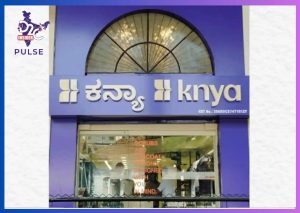
Home interiors startup HomeLane has shown promising results for FY25, marking a positive turn in India’s D2C market. The Bengaluru-based business saw a 22% increase in operating revenue, reaching ₹747.8 crore, up from ₹613.6 crore in FY24. At the same time, they cut their net loss by 8% to ₹111.4 crore, from ₹121.7 crore the prior year.
HomeLane’s numbers show how D2C home-interior brands in India are refining their operations as they get bigger. As more people focus on improving their homes, HomeLane’s rise shows that the D2C model in India is expanding past basic ecommerce to include complete service and experience offerings. The brand’s plan fits with what’s happening across the Indian D2C space, where new companies are using tech-based supply chains, simple operations, and wide-ranging outreach.
The 22% increase in operating revenue for FY25 shows a strong need for HomeLane’s full-service home-interior options, which include design, making, and installation under the D2C setup. Their EBITDA loss was ₹74.7 crore, a 19% improvement from last year, thanks to cost controls and better unit economics. This is similar to what many fast-growing D2C brands in India are doing, with a bigger emphasis on profit control.
The D2C home-interiors market has typically needed a lot of investment, but HomeLane’s smaller losses and better results show that digital-first and D2C retail-plus-services brands in India can change into more lasting business models. HomeLane has also been focusing on its experience centers, offline locations, and design touchpoints as part of its distribution and marketing plan. This allows them to connect with customers both online and offline, which many experts say is key to a successful omnichannel D2C plan in 2025.
HomeLane’s progress is part of a wider trend in Indian D2C, where there’s a move away from quick, expensive scaling to smarter, more efficient growth. While many startups still accept big losses for fast growth, HomeLane’s shrinking losses alongside revenue growth puts them among a group of D2C brands in India that are getting closer to being profitable. This makes them a brand to watch in the D2C industry.
These results are especially important because of HomeLane’s strategic moves over the past year, like buying DesignCafe and completing a funding round to support growth. By combining service, design, making, and D2C distribution, HomeLane has a unique spot in the Indian D2C market, mixing physical assets with digital reach.
As more consumers in India view their homes as an extension of their personal style, brands like HomeLane are gaining from this change and the D2C market’s wider development. With higher margins, revenue growth, and a sharper focus, HomeLane’s FY25 results are a good sign for D2C brands in India and the wider direct-to-consumer story.
For investors and market watchers following D2C startup news, HomeLane’s turnaround shows that growth and staying power can go together. The Indian D2C sector is still being shaped not just by how fast it’s growing, but by how it can become profitable, and HomeLane’s improvements in FY25 offer a small look at that process.








